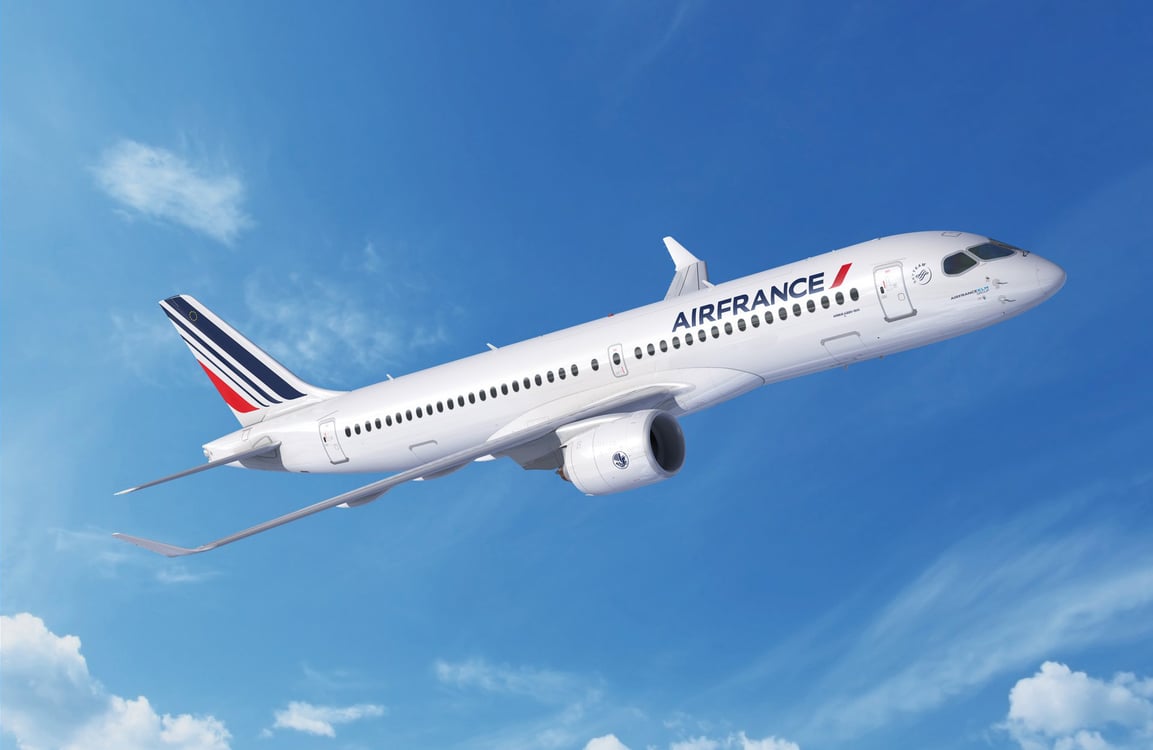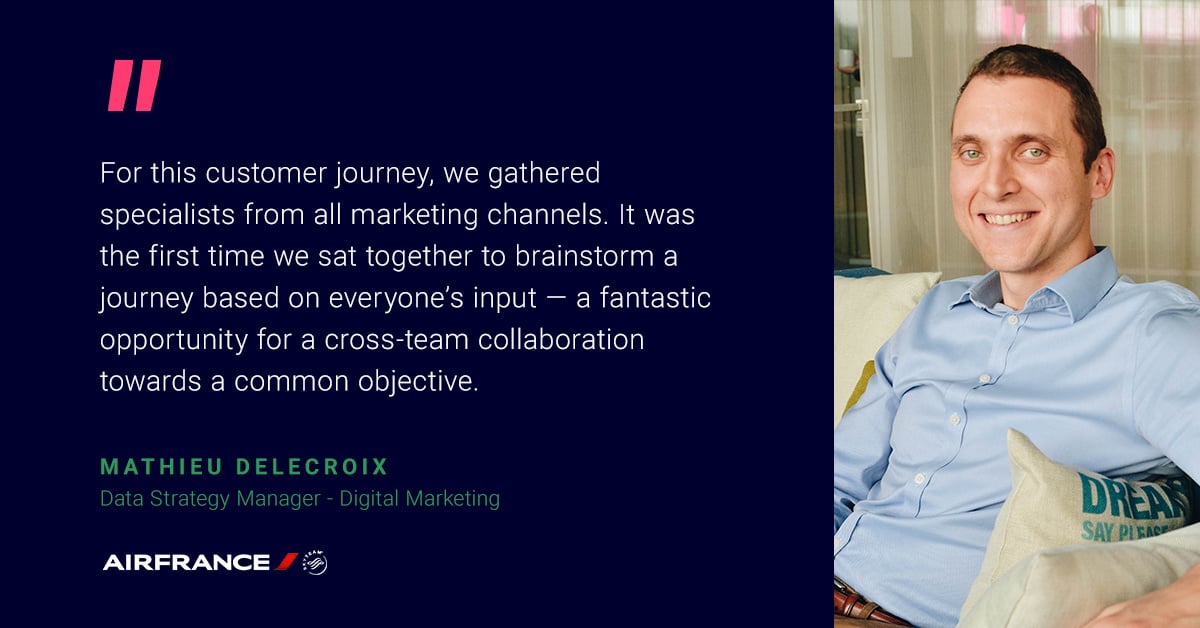Customer Data Platform Case Study
How Air France boosts performance with cross-channel customer journeys

The Airlines CDP Use Case for Air France
+25.7%
Increase in conversion rate
Air France's digital e-commerce team is driven by the ambition to provide the best possible service to their customers and prospects. This means that they need to know what their passengers expect from them at any moment and be able to provide them with the right service.
In 2016, Air France onboarded the Relay42 platform and started its journey to building a 360-degree view of the customer. By better understanding their customers, the team aimed to personalize their offerings and services to suit the needs of each individual customer.
IDENTIFYING THE AUDIENCE
To get started, the team began capturing all flight searches that occurred place on the Air France website. A customer journey would be activated when a website visitor searched for a flight but didn't book.
With the help of Relay42 identity management, the team could already recognize whether a search was being made by a prospect or an existing customer. From there, customers were placed into one of two audiences, based on whether they had a travel voucher for a destination that had been canceled due to the pandemic.
CONNECTED CHANNELS
The team chose to orchestrate this journey across three channels: push messaging, display and social media.
HIGHLY PERSONALIZED MESSAGING
The e-acquisition team tailored the messaging on all channels for each of the three target groups, based on the last flight search of every visitor and whether they had a flying voucher.
Here's what an orchestrated customer journey looks like:
Results and Next Steps
The marketing team created an A/B test so they could optimize the performance of the customer journey. The test compared the old way of single-channel retargeting vs the new orchestrated journey with sequenced, timely activated channels.
After the first testing period, the marketing team measured a significant performance increase: the new journey increased conversions by 25.7%. The team learned that channel sequencing works: start with push messaging, then follow up with display and/or social to encourage conversion.
The time-based rules also showed a positive effect, as customers were not overly exposed to advertising.
After the successful experiment with Relay42’s journey orchestration module, the marketing team will be focusing on fine-tuning the customer journey and implementing the journey on a larger scale.

Driving Marketing Growth Value for Inspiring Brands

+115% Conversion Rate Uplift on Brand Search
Levi's Strauss & Co.

+25% In revenue via email marketing
KLM Royal Dutch Airlines
.png?width=750&height=500&name=Untitled%20design%20(28).png)
+272.75% Increase in the number of vacancy alerts
Randstad
.png?width=750&height=500&name=Untitled%20design%20(25).png)
+86% Increase in leads
Vattenfall
.png?width=750&height=500&name=Untitled%20design%20(27).png)
+90% Increase in requests for information
Mazda Netherlands
See Relay42 in Action
Experience a first-hand tour of the Relay42 Customer Data Platform with one of our consultants

